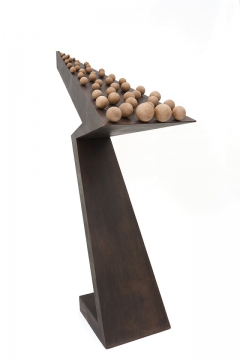Type:
Sculpture
Material / technique:
Stained wood, cork, electric motor
Dimensions:
186 x 60,5 x 113 cm
Type of acquisition:
Acquired by the Charles Vreeken Fund
Year of acquisition:
2020
Depository institution:
L Museum
